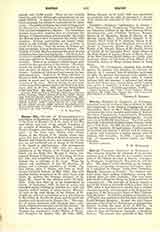

Kansas City, Diocese of (KANSANOPOLITANA), established September 10, 1880, to include that part of the State of Missouri, U.S.A., south of the Missouri River, and west of the eastern boundary of the counties of Moniteau, Miller, Camden, Laclede, Wright, Douglass, and Ozark, an area of 23,539 square miles. At the same time, Bishop John Joseph Hogan, of the Diocese of St. Joseph, which comprises that part of the State of Missouri between the Missouri and Chariton Rivers, was transferred to the new see and continued also in charge of the Diocese of St. Joseph as administrator. This arrangement continued until June 19, 1893, when the separate jurisdiction of the Diocese of St. Joseph was established, and the Right Rev. Maurice F. Burke, consecrated Bishop of Cheyenne, in Wyoming, October 28, 1887, was transferred to the title of St. Joseph. Kansas City is suffragan of St. Louis. When the diocese was established, it had 42 churches, 30 priests, and a Catholic population of 12,000. The first bishop, John J. Hogan, was born at Bruff, County Limerick, Ireland, May 10, 1829. His early classical studies he pursued in his native land, after which he entered the diocesan seminary at St. Louis, Mo., where he was ordained priest April 10, 1852. From that date up to his consecration as bishop, September 13, 1868, he had an active and successful career, building up parishes in a wide and sparsely settled section of northwestern Missouri. As soon as he took charge of the Diocese of St. Joseph, his zeal and earnestness gave a new impetus to the affairs of the Church there, and the same was manifest with his advent to Kansas City. The number of priests increased, new churches arose, additional religious communities entered the diocese. In 1896 he asked for a coadjutor, and the Rev. John J. Glennon was consecrated titular Bishop of Pinara, and Coadjutor for Kansas City (June 29, 1896). Bishop Glennon, on April 27, 1903, was transferred as coadjutor with the right of succession to the See of St. Louis and succeeded to that title October 13, 1903.
Statistics.—Religious Communities in diocese.—Men: Benedictines, Franciscans, Dominicans, Jesu-its, Lazarists, Fathers of the Most Precious Blood, Redemptorists, and Christian Brothers. Women: Sisters of St. Benedict, Sisters of Charity of the Blessed Virgin Mary, Third Order Regular of St. Francis, Third Order of St. Dominic, Sisters of St. Francis, Sisters of the Good Shepherd, Sisters of St. Joseph of Nazareth, Sisters of St. Mary, School Sisters of St. Francis, Sisters of St. Joseph, Sisters of Charity of the Incarnate Word, Little Sisters of the Poor, Sisters of Loretto, Sisters of Mercy, Sisters of the Most Precious Blood, Sisters of Charity (Emmitsburg), Sisters of Our Lady of Sion, Sisters of the Visitation, Sisters of Mercy, School Sisters of Notre Dame.
Priests, 101 (31 religious); churches with resident priests, 74; missions with churches, 14; stations, 18; chapels, 30; 1 seminary with 20 students; academies for girls, 10; parishes and missions with schools, 42; pupils in academies and schools, 5543; 2 orphan asylums with 245 inmates; 1 industrial and reform school with 60 inmates; total children under Catholic care, 5773; 6 hospitals; 1 home for aged poor; 1 foundling asylum. Catholic population, 55,000.
THOMAS F. MEEHAN

